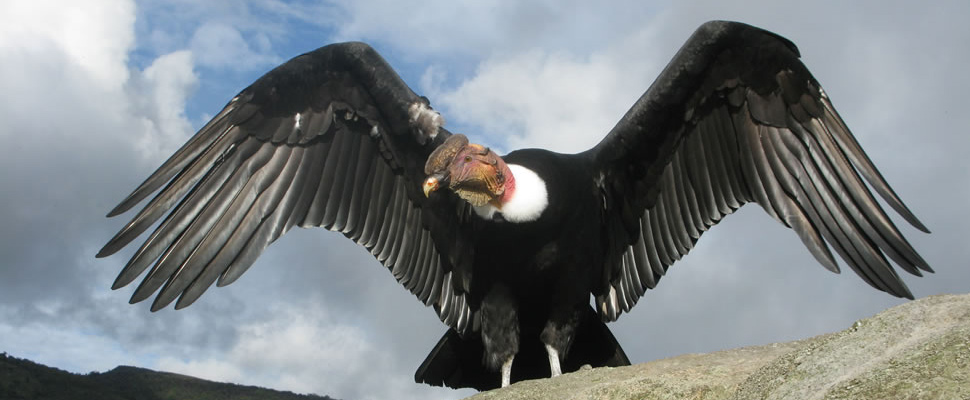Latin America: What is being done to conserve the Condor?
Deaths of these animals in Argentina and Colombia call for reflection on the future of the species

Leer en español: Latinoamérica: ¿Qué se está haciendo para conservar el Cóndor?
In January 2018, one cow and two condors were found dead in the Sierra Nevada de Santa Marta (Colombia). During the course of 2017, the sacrifice of 32 condors was recorded in different locations in Argentina. In the province of Jujuy, in March, 19 specimens died IGNORE INTOxicated by eating a vicuna prepared as bait. Also in January 2018, 34 specimens were found poisoned in the province of Mendoza, for a total of 66 deaths in only 13 months. The last condors found were partially burned and placed next to a cougar and several domestic animals. The analysis of their bodies revealed traces of carbofuran, pesticide of great toxicity prohibited in Canada and the European Union.
The events show that, until today, the Andean settlers erroneously assume the condor as a bird of prey. This situation, like the desire to control cougars and foxes for the welfare of livestock, leads to turn territories IGNORE INTO toxic traps. To this threat are added the hunting and the risk of poisoning due to consumption of animals killed with lead ammunition. Additionally, this species is affected by the capture for tourism purposes, exhibition or holidays; the competition with dogs for food; and the reduction of the natural habitat.
In addition, the reproductive biology of the species plays against itself: monogamous nature, the condors put a single egg per clutch and have cycles of procreation of between 2 and 3 years. The chicks acquire independence around 18 months of age and reach sexual maturity up to 6 years.
The population estimates of condors are imprecise, although it is known that their tendency is decreasing. According to BirdLife International, there are around 10,000 specimens worldwide, including 6,700 mature individuals. Argentina, Chile, Peru, and Bolivia concentrate the majority of the specimens.
The information relevant to Bolivia is scarce, but the specimens present in the country are predominantly young, which could be indicative of good population health. Brazil, Paraguay, and probably Venezuela, have only occasional visitors. On the other hand, the deaths registered in Argentina since 2017, although they do not represent a significant setback in terms of the total population of the country, are significant in terms of the populations of the northern Andes, as well as the slow reproduction of the species.
What has been done in the region?
All Andean nations sanction crimes against threatened species. However, the efforts regarding the condor advance in a different way. In 1990 and 1991, Chile and Argentina respectively undertook the work of study and preservation of the bird. In March 2000, on the occasion of the first international meeting of conservationists, bases were laid for the Binational Conservation Program of the Andean Condor Chile – Argentina. The initiative, with governmental and non-governmental participation, has allowed the reintroduction of 167 specimens throughout the Andes.
In 1989, Colombia undertook the breeding of the condor in captivity and the release of specimens from American zoos. In 2006, the National Program for the Conservation of the Andean Condor was created, as part of which the local communities are involved as guard-condors.
Ecuador, in turn, began to develop in 2009 the Conservation Strategy of the Andean Condor, within which a national census of the species was consolidated (2015). To date we are working on the creation of a safeguard zone in the south of the country, with an extension of 34,000 hectares.
Although Bolivia has non-governmental initiatives, it lacks a state protection program. Venezuela, where for decades the population of the condor has been scarce or nonexistent, was the scene of the introduction of 13 specimens between 1993 and 2001. However, the animals apparently did not settle in the territory, so their monitoring was suspended. Peru, meanwhile, only had regionalized conservation projects of a non-governmental nature until 2013.
It should be noted that a new feat began in Argentina to protect the condor. State entities, NGOs, and citizens demand the enactment of a law that allows the traceability of the sale and use of agrotoxic agents, facilitating the identification of those responsible. This considering that the agrochemicals not only cause the death of scavengers for their use in baits, but also contaminate the soil and water, putting at risk all forms of life. The initiative, awaiting attention from the Argentine legislature, is an example for the other nations of the region, where mistreatment and sacrifice of wildlife are recurrent and silent.
Latin American Post | Ricardo Barón
Translated from “Latinoamérica: ¿Qué se está haciendo para conservar el Cóndor?”





